This is an area I now have an intense personal interest in, as I now have continuous tingling in my fingers from all the extreme brush cutting I have done to test each new prototype of my BrushDestructor Blade. As a result, I will be looking at and sharing with you all ways and products that help reduce vibration transmission to your hands and arms.
White Finger Death or Hand-arm vibration syndrome, (HAVS) as it is now called, is vibration induced damage to nerves and small blood vessels in fingers, hands and arms and is caused by working with vibrating tools. Prolonged use can lead to permanent numbness of fingers, bouts of white finger and in the worse case scenario, eventual loss of fingers.
HAVS is caused by the vibration from frequent and repeated use of hand-held tools, with brush cutters being a prime example. It is not yet fully known how vibration causes this condition, but the results have been well understood for many years. It is suspected that it is something to do with the bodies defence system where in extreme cold situations the body will close down the blood vessels to the extremities to keep the core body warm. However in this case it is vibration that triggers the reaction, to the small nerves and blood vessels in the fingers. Nerves are affected initially, leading to changes in sensation. This can then be followed by Raynaud’s phenomenon resulting in the constriction blood vessels, causing the fingers to go white from lack of blood flow.
Numbness, loss of feeling and or tingling (pins and needles) in one or more fingers are usually the early signs. Continuing to expose yourself to vibration will result in an eventual permanent numbness that can extend right along affected fingers. Raynaud’s phenomenon comes in bouts or attacks that are triggered by cold weather or touching a cold object.
A typical bout of Raynaud’s phenomenon goes as follows: at first, the fingers go white and cool. This being due to the small blood vessels narrowing or going into spasm. This is then followed by finger tips that go a bluish colour, due to the oxygen being all used up from the reduced blood supply of the narrowed blood vessels. From there they then go bright red, as the blood vessels opening up again (dilating) and the return of a good blood flow.
Besides HAVS, other symptoms that can develop as a result of continued exposure to vibration, are corporal tunnel syndrome and tennis elbow. Minor damage to the muscles, joints and bones can also occur, causing aches and pains in the hands, lower arm and shoulder joints.
HAVS was first recognized around 1900 with the introduction of pneumatic tools that were used in quarries and mines. Since then, a multitude of time and labour saving hand tools have been developed for practically every major construction, from mining, manufacturing, repair, and agricultural task. These powered hand tools include chain saws, grinders, sanders, drills, power hammers, mowers, brush cutters blowers, and machine tools that expose workers to high levels of vibration.
The risk of developing HAVS increases with the magnitude of the vibration and the length of exposure, the grip, push, or force used to guide and apply vibrating tools. Cold temperatures, and smoking, are all so factors that can lead to constrict blood vessels, which in turn restricts blood flow to the affected part of the body. The image below shows how small blood vessels can become so constricted that no blood flows to the finger tips.
In some cases the symptoms can develop months or even years after finishing working with vibrating tools, so early knowledge and precautions should protect you from developing problems later in life.
At this point there is no known treatment for hand-arm vibration syndrome, other than to stop using the offending brush cutter and other vibrating tools. HAVS does often get better if you recognise the symptoms and stop using vibrating tools at an early enough stage.
Brush Cutter Handle Vibration
Some of the more reputable brands of brush cutter have tested their machines and give values for both handle vibrations which is measured in m/s².
So what does m/s² actually mean, in very simple terms it mean the average acceleration of an object that is vibrating back and forth. Taking our brush cutter handle that is vibrating as an example, the handle starts out with a zero motion, but then start moving sideways at a faster and faster speed and then it starts to slow down at a slower and slower speed until it comes to a stop. It then repeats this in the opposite direction to return back to where it started. The continuing movement back and forth is called vibration and the measured intensity of this vibration is the average acceleration between the stationary point and its fastest travel point.
From here it gets a little more complicated, our brush cutter handle can be vibrating from side to side at one level, fore and aft at another level and up and down at another level again. Then the frequency or the (number of time the handle vibrated back and forth per second) is also taken into account.
It is the average of all these three vibration when added together, plus a weighting given to the frequency that has been shown to have the highest affect on our hand and fingers. That then is the reading we will see in some brush cutter handle specifications and of cause the higher the reading in m/s² the more intense the vibration. Health research data tells us that the degree of harm is related to the magnitude of acceleration by the time exposed to that acceleration.
Put very simply in brush cutter talk, the bigger the engine, the cheaper the brush cutter and the more hours you use it the quicker you will suffer the effects of HAVS.
Brush Cutter Vibration Explained
There are two main sources of vibration on a brush cutter, the engine and the cutting head. There could also be third source from the drive shaft itself, which I have found to be the case with one brush, but at this stage I am not sure how common this is without pulling apart more brush cutters.
The main source is from the engine, from a 2 stroke engine you get a vertical reciprocating vibration from the piston going up and down and even though the big end crank shaft is weighted to offset this there is still some vibration caused by the engine firing. Then every time the engine fires there is a rotation vibration as the crank shaft converts the vertical force to a rotational force. With 4 stroke engines, the vibration is more complex again as this engine fires every second revolution.
The next main source is from the cutting head, you will get a once every revolution vibration from a blade that is not perfectly balanced, especially as they wear and chip. Then there is a pulse from the blade impacts and depending on the number of teeth or blades, you can get anything from two to eight or more impact pulses for each revolution of the blade.
Then depending on the gear head ratio which ranges from 1.2:1 to 2:1, which means that the engine runs anything from 1.2 to 2 times faster than the blade. These respective vibrations at a range of different frequencies enter the shaft from each end and travel along the shaft where they interplay with each other creating new stronger vibrations again. When the vibration from one end of the shaft reaches the other end, some will get absorbed and some will get reflected back along the shaft to mix with and complicate the shaft vibration even more. Normally these vibration are so small, that they are not visible to the human eye, but on some poorly designed brush cutters, rouge wave vibrations become so intensive that they are clearly visible to the human eye as you can see below.
The other possible source of vibration from the shaft, which I discovered only after pulling apart an old Chinese brush cutter to look at the shaft support bushes to see how they were made. I had taken the engine and gearhead off the shaft and before pulling the drive shaft out from the aluminium shaft, I rotated the shaft to see if there was any play between the shaft and the shaft support. What I found was that the shaft rotated a little bit more freely for half the rotation and less so for the other half rotation. When I pulled the shaft out I noticed that it had a slight bow in it, of about 1 to 2mm. I am not sure how common this is, but I suspect that of all the brush cutters there are in the world, the one that I happened to pull apart just happened to have the bent drive shaft.
I did not give this much though, until a few weeks later when I was walking some distance with my brush cutter hanging from the harness and noticed how much the aluminium shaft flexed up and down as I walked. Later I hung the brush cutter from the ceiling and noticed that the aluminium shaft had about 5mm bow caused from the weight of the gearhead and blade at one end and the engine at the other. After thinking about it for a while, I thought that this has to be another source of vibration. Since you have a shaft that has a stationary bow in one direction and a rotating shaft with it own bow. As the drive shaft rotates around, it rotates more freely for one half of the turn when the bows are in the same direction and less freely when the bows are opposite one another.
Finally they go and attach handles to what basically resembles a vibrating guitar string and just like when you touch a guitar string it stops ringing as your finger absorbs the vibrations. The handles and then your hands absorb a lot of this ringing vibration from the shaft. You really couldn’t get a worse design for a hand held tool if you tried.
Most brush cutters have a rubber isolator between the engine & the shaft to reduce some of the engine vibration and absorb some of the reflected shaft vibration. You can see a typical brush cutter rubber vibration isolator shown in the picture below.
As brush cutters started out as line trimmers and because you do not get much impact pulse back from a nylon line, there was no need to rubber isolate the gear head. But now with the expanding range of metal blades, that can produce some serious impact pulses back up the shaft especially when being pushed hard. I am of the opinion that the gear heads should also now have rubber isolation mounting to prevent transfer and absorb reflected shaft vibration.
I have offered my assistance to a number of brush cutter manufacturers to take the design of the brush cutter to the next level, as there has been no major design improvements is the last 15 years. Sadly none of them have even had the decency to reply to my emails, so now that I have taken my blade to the pinnacle of its design I am thinking that I will have to look at my own design gear head, shaft and handles. What gives me the ability to redesign the brush cutter, is that I have the engineering design skills to do so, but more importantly I am also a heavy end user of this product. It is actually quite rare for the design engineer to have direct access to the end user, let alone be the end user.
How to reduce hand vibration
If you are buying a new machine, ask the question, it the supplier cannot give you a m/s² for each handle, look at another machine or supplier. The more who ask this question, the more manufacturers will take this issue seriously.
If you already own a brush cutter, than the best thing you can do is to properly balance your brush cutter so that when it is hanging from your harness the cutting blade is roughly parallel with the ground. A properly balance brush cutter means you do not have to grip the handles as tightly to control it. A loose grip means less vibration transmitted into the hands. If you balance your brush cutter with half a tank of fuel, than for half a tank you a are pushing down with your palm and the other half tank you are lifting up with your fingers.
Keep playing with the balance, until it feels right for you, do this and you will see a big reduction in the vibration transmitter to your hands.
Ensure that the brush cutter is well maintained and running smoothly, a rough running engine will vibrate al lot more.
If you are using any blade that has sharp teeth, keep the teeth sharp. You will be able to clear more area more quickly, thereby reducing the time you need to use the brush cutter.
Take at least a 10 minute break every time you refuel. Short bursts of work are better than long periods of work without a break.
Keep your hands warm by wearing gloves, especially silicone gel anti vibration gloves.
I now sell anti-vibration gloves that I have designed, to help reduce vibration to the hands when gripping a brush cutter or chain saw. These gloves have 6mm silicone gel pads, placed in such a way to allow the hand to wrap around and grip the handles of both these machines. To read more, click the image below.
If you have any questions about brushcutters in general, or would like to share with me what you do and especially don’t like about your brush cutter, please email it to me. The more useful information I can add to this page, the more it will give future buyers of brush cutters the right information to make the right purchase decisions that best suits their needs.
Like this page, please share with a friend

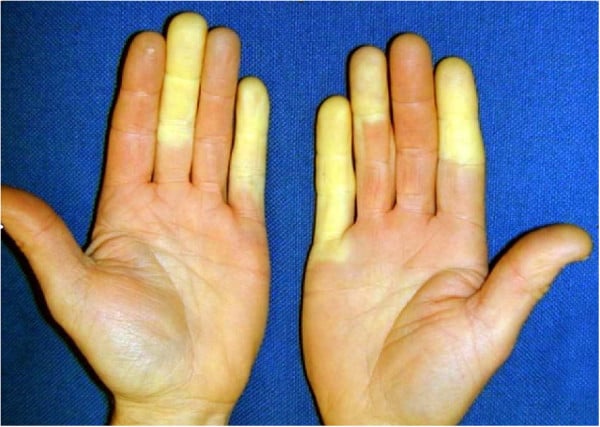
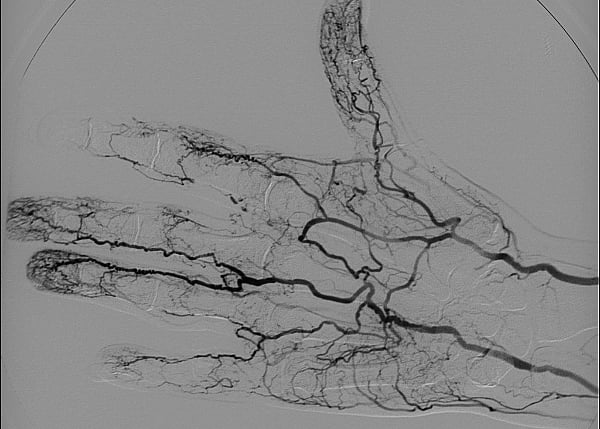
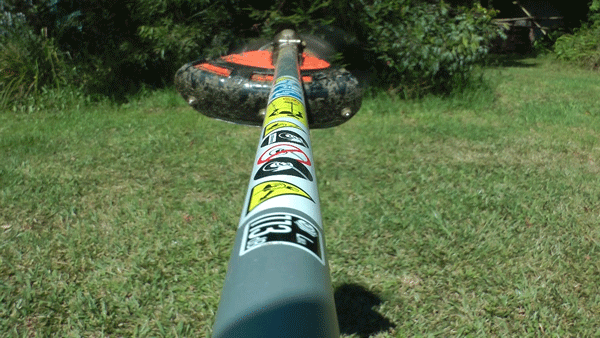
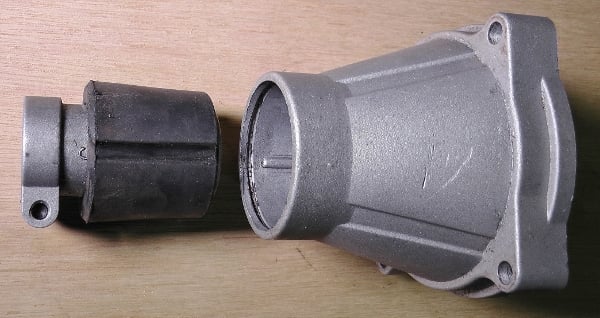
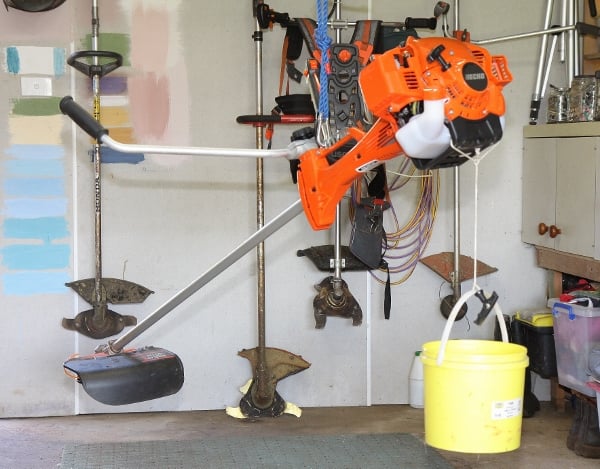

This is a impressive story. Thanks!
I think this web site has got some real good information for everyone